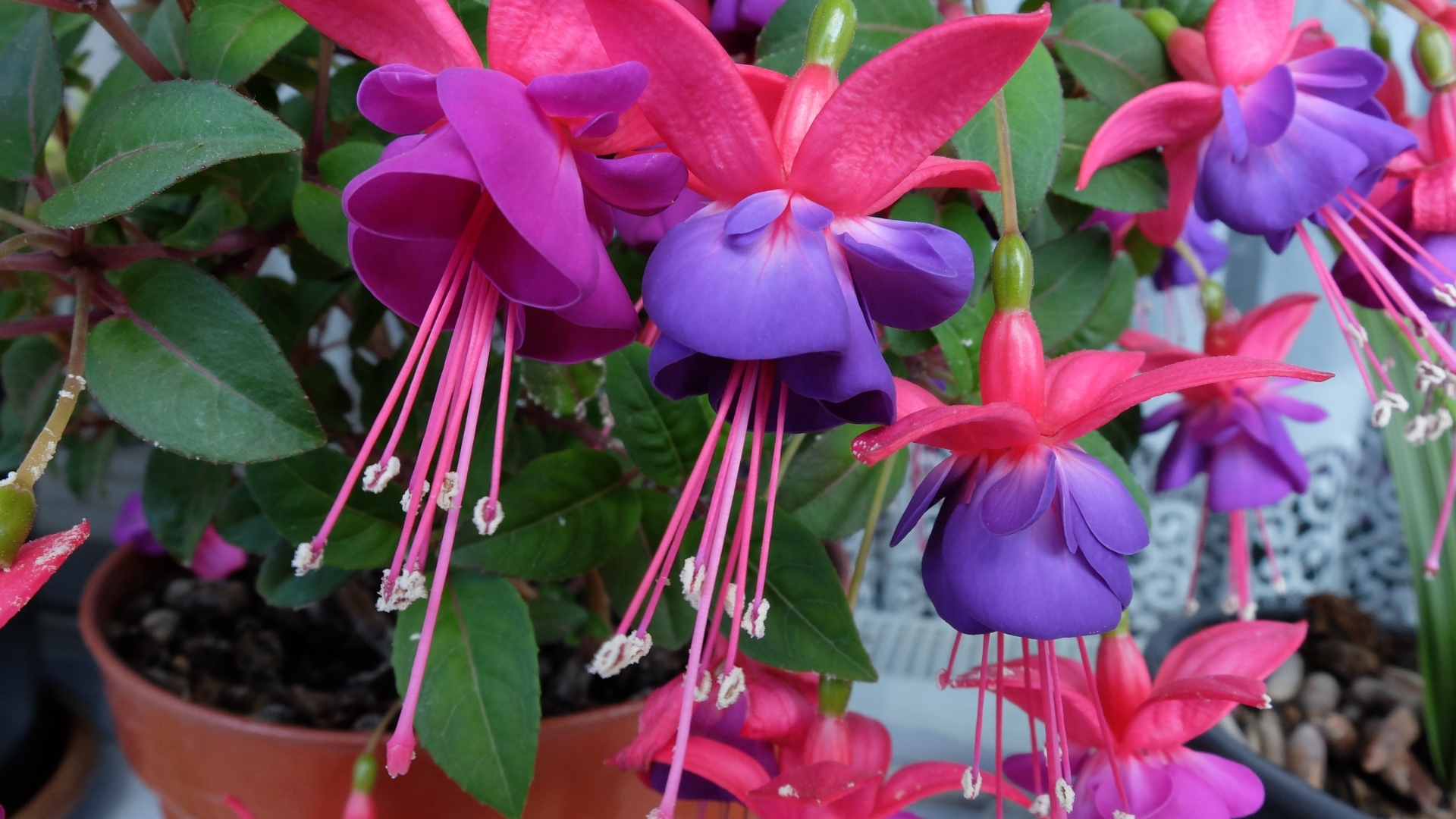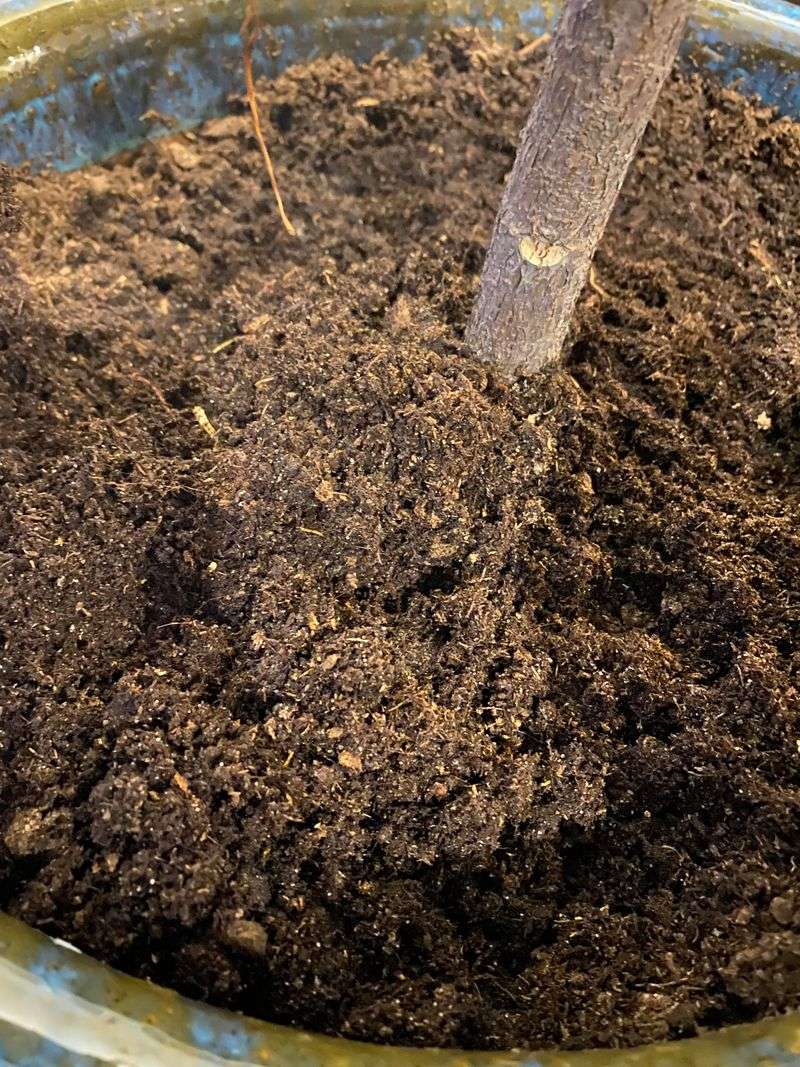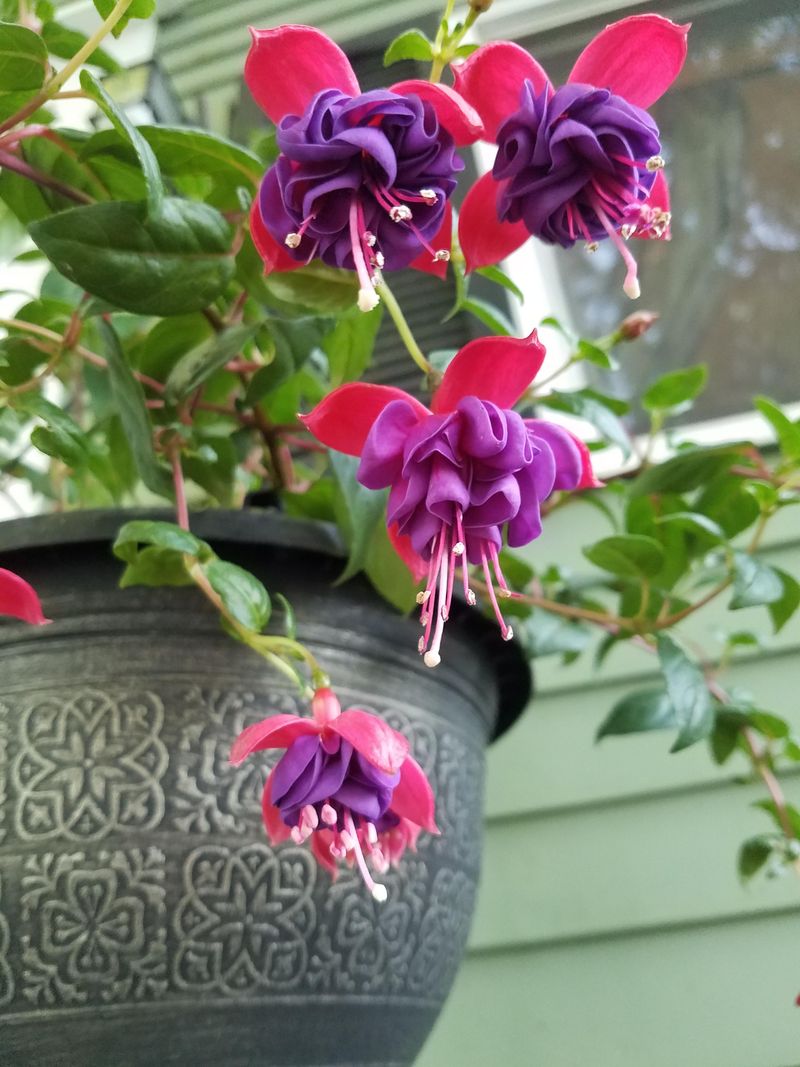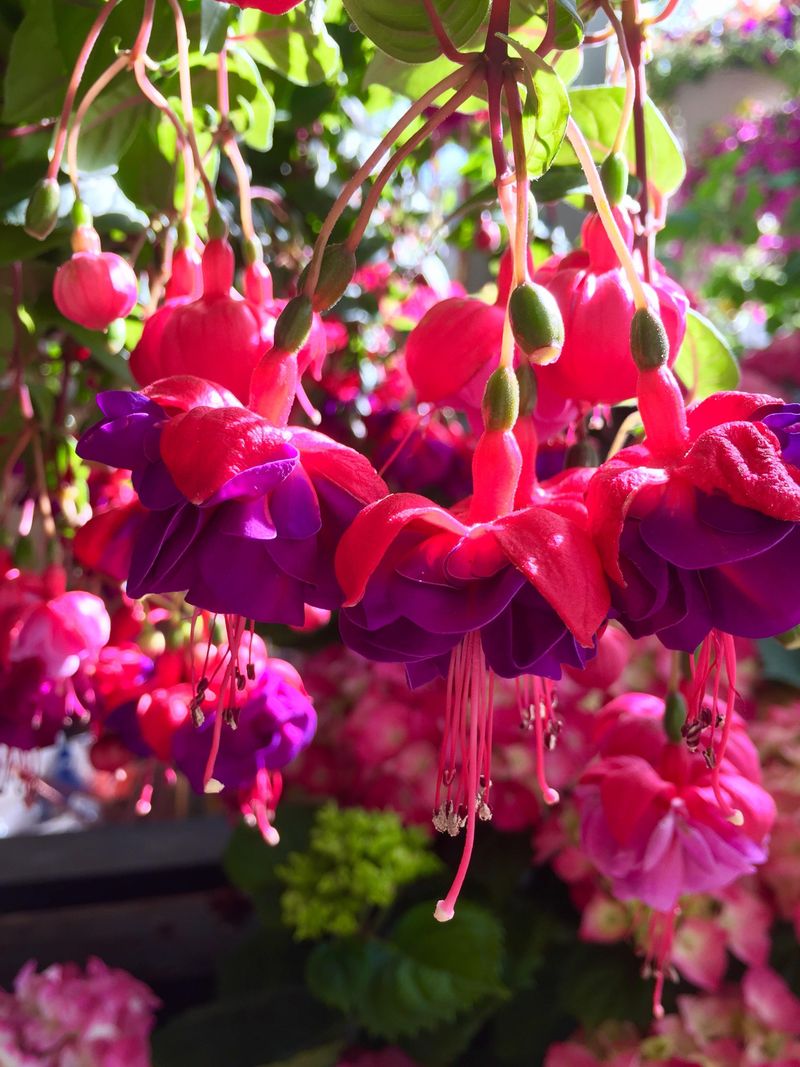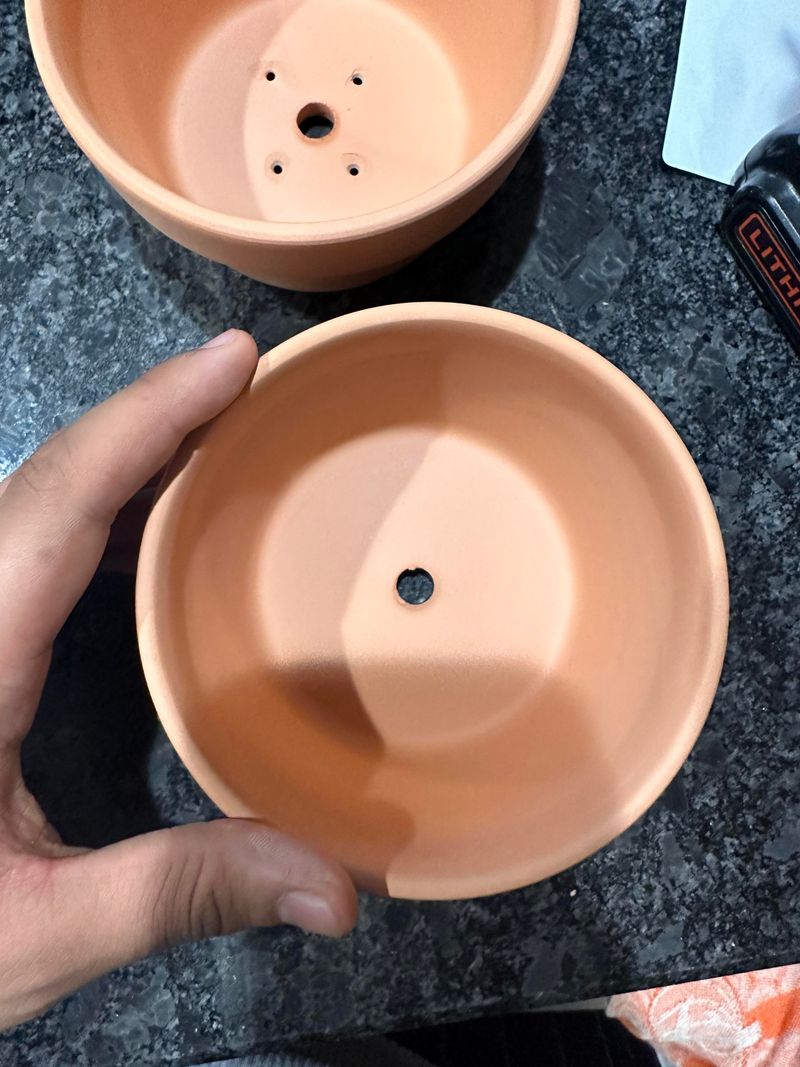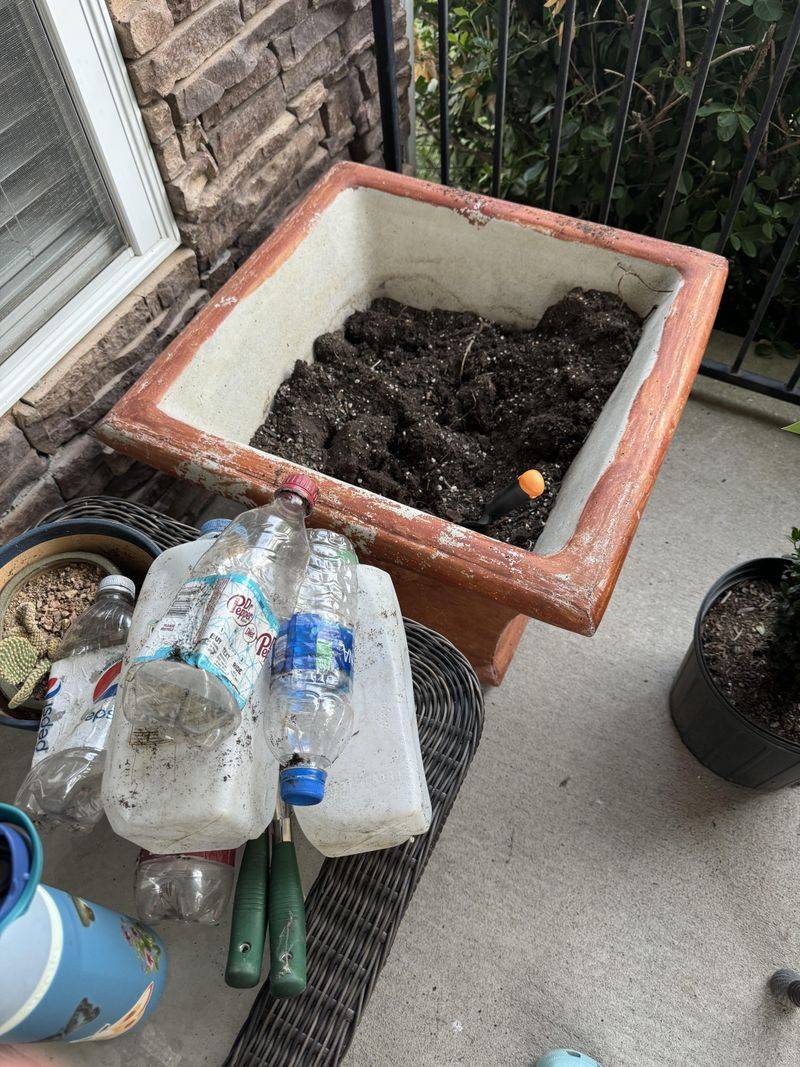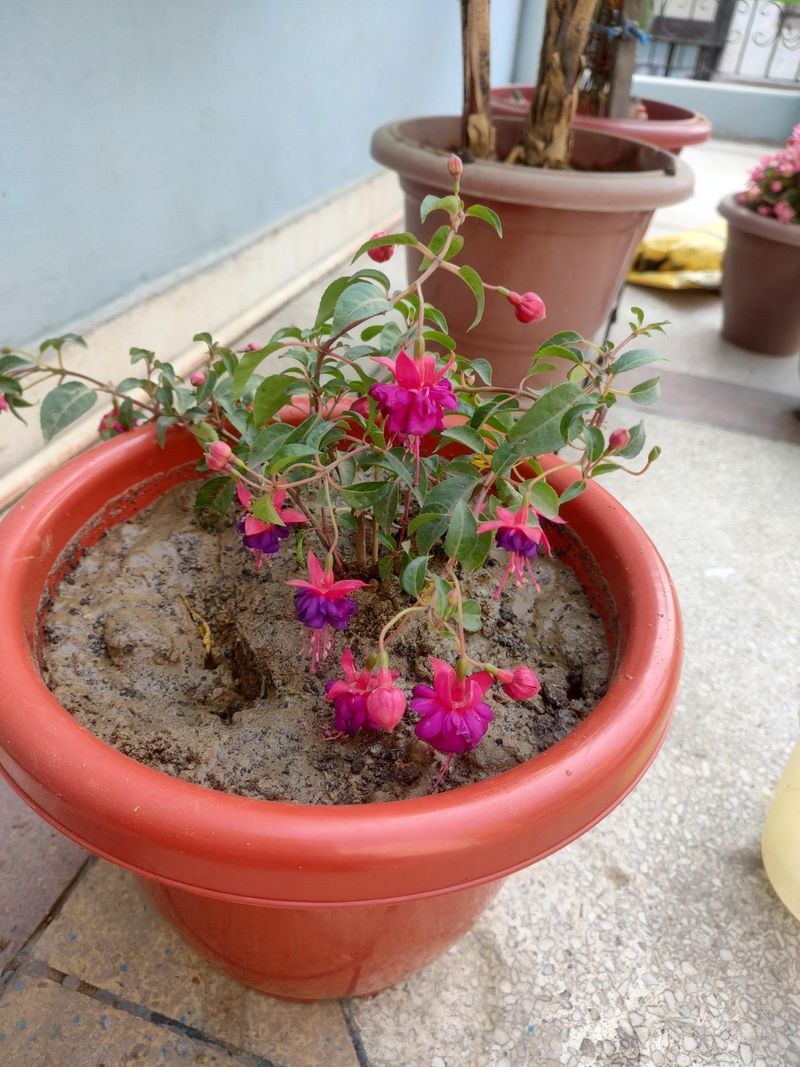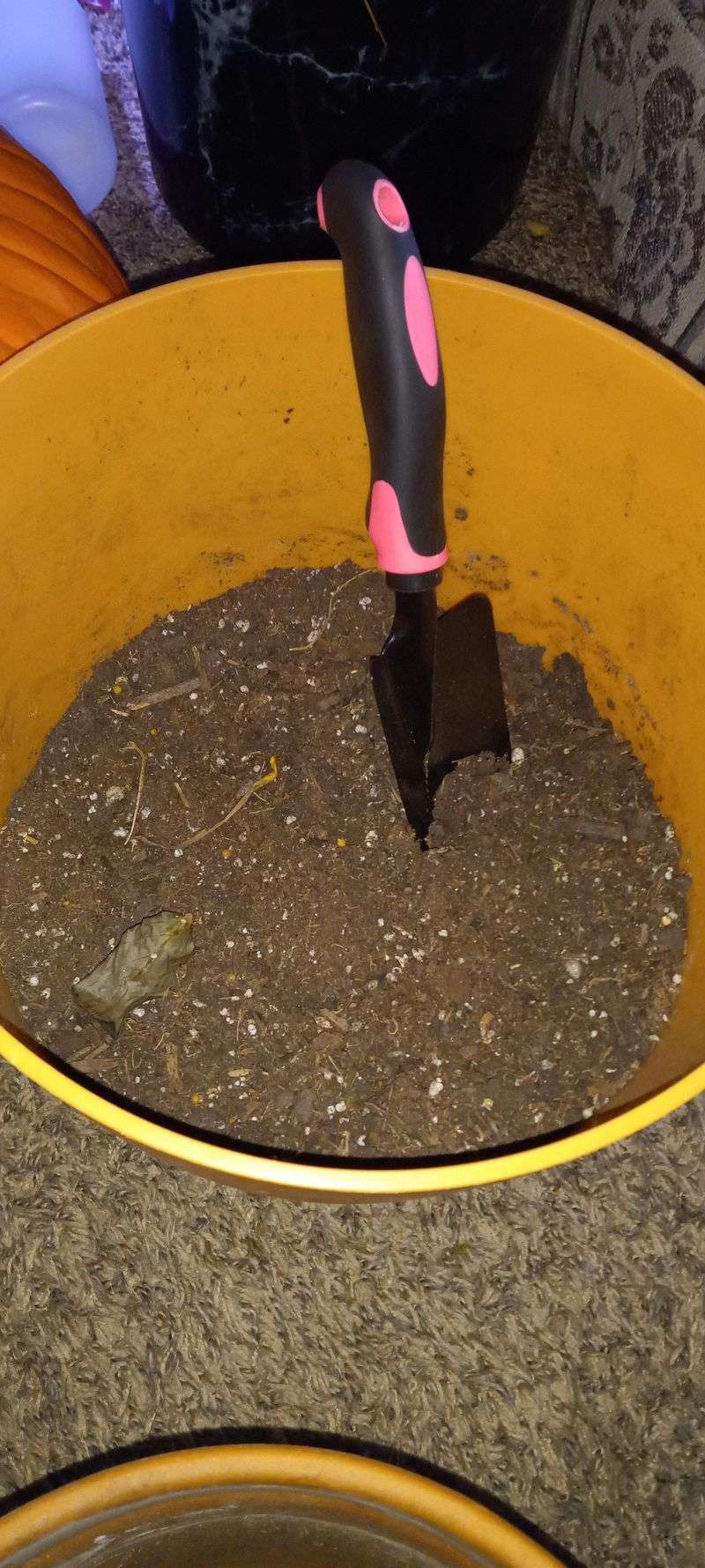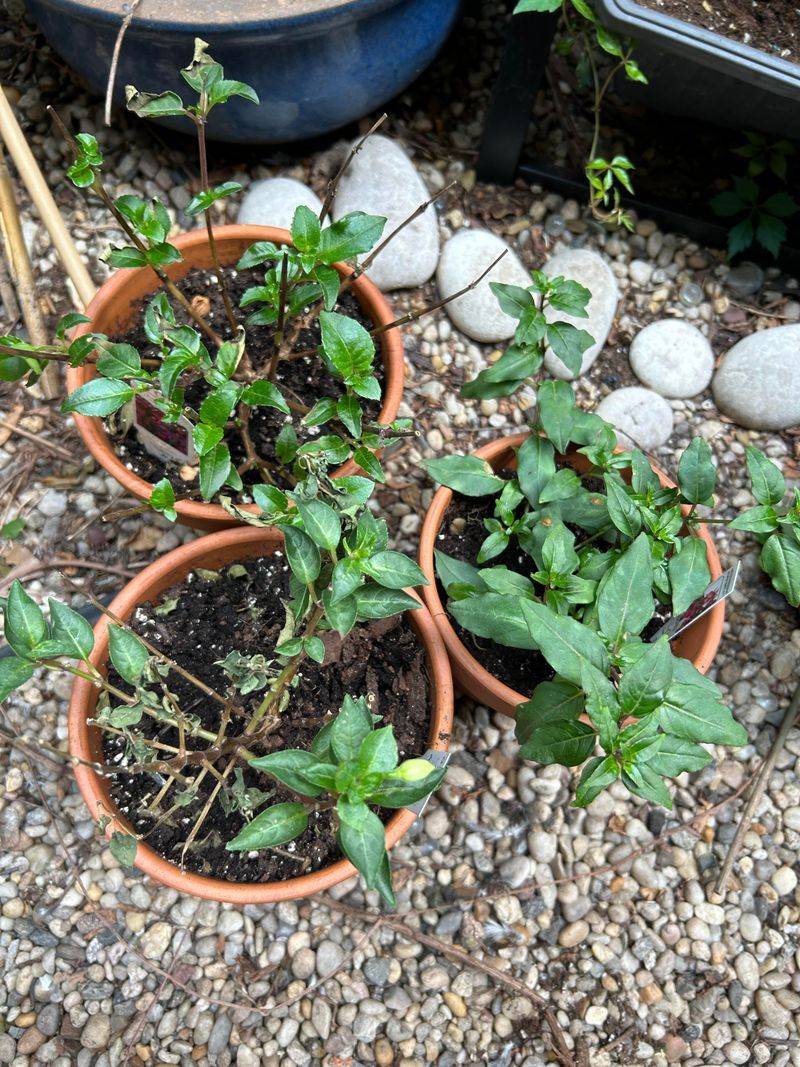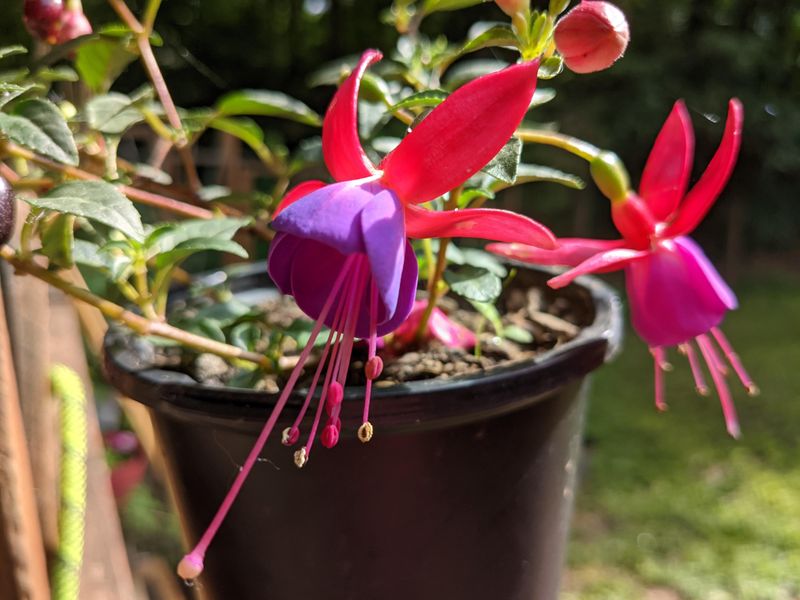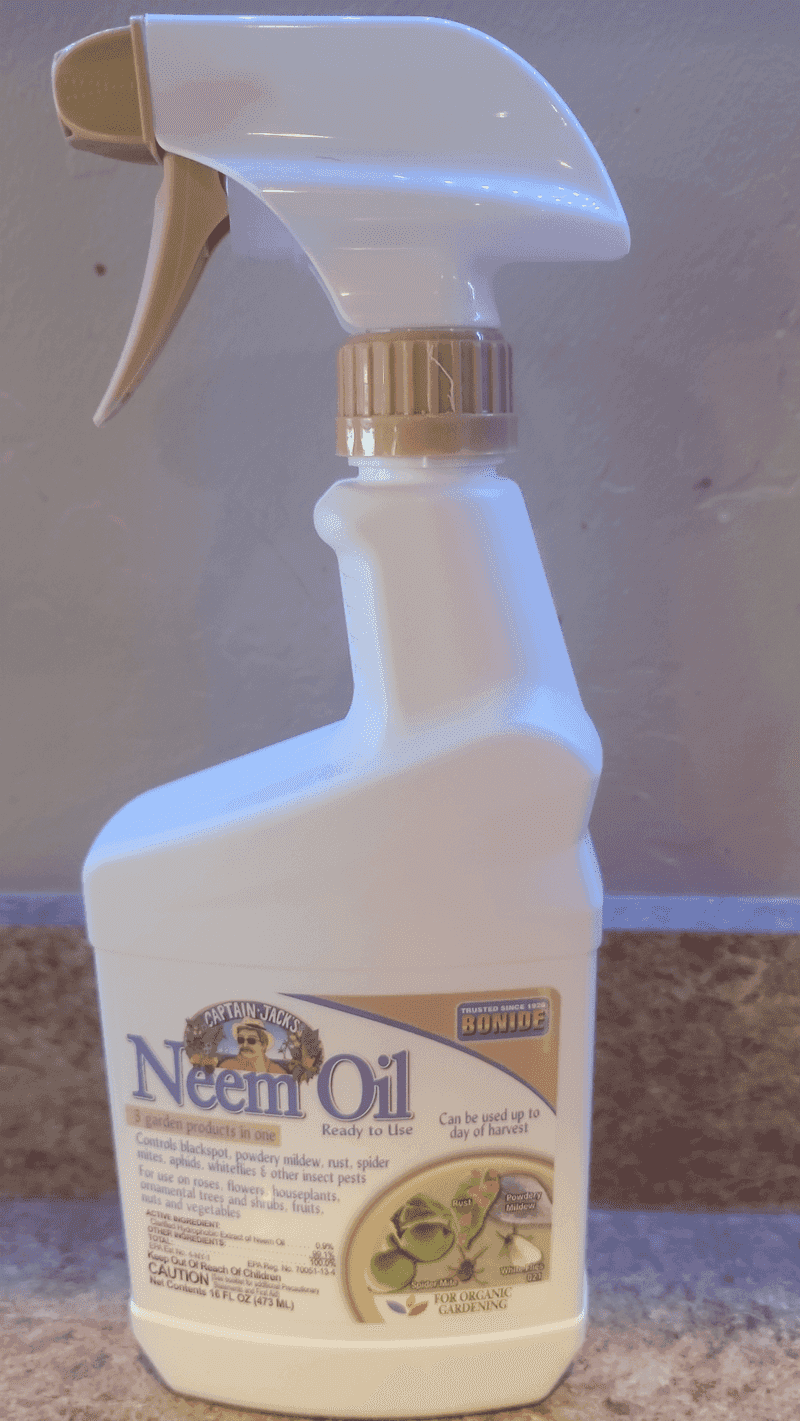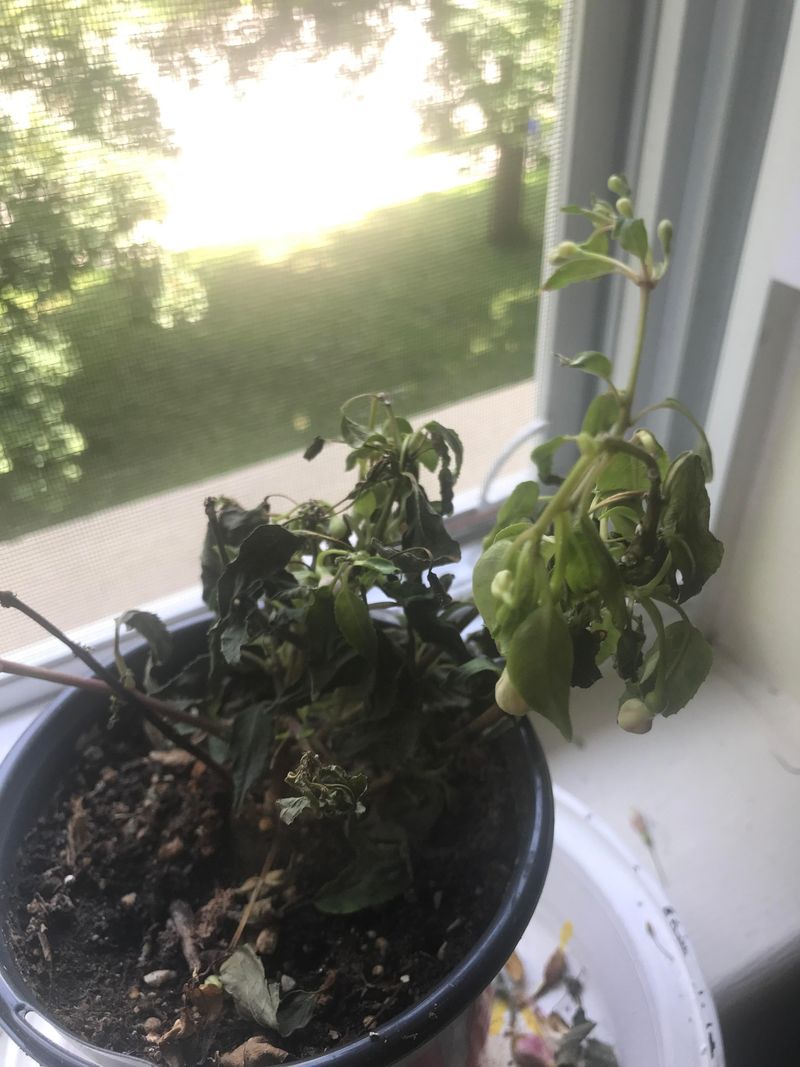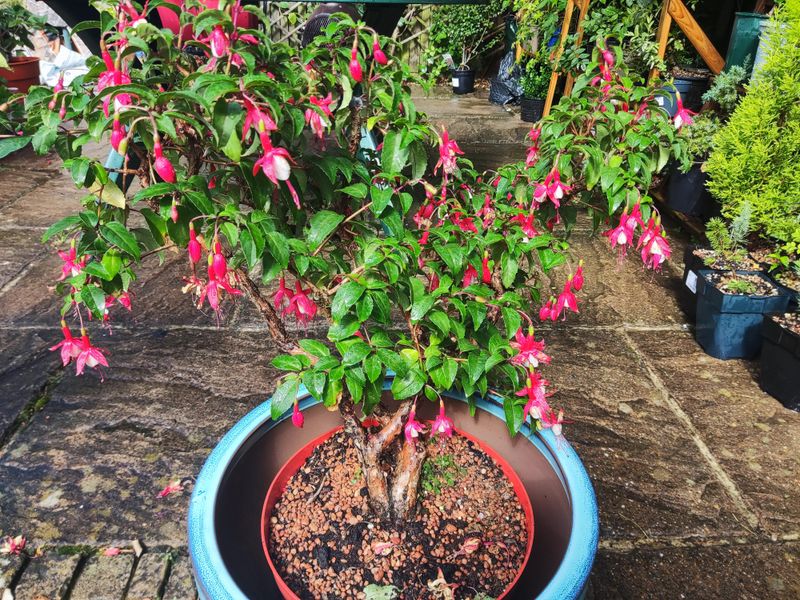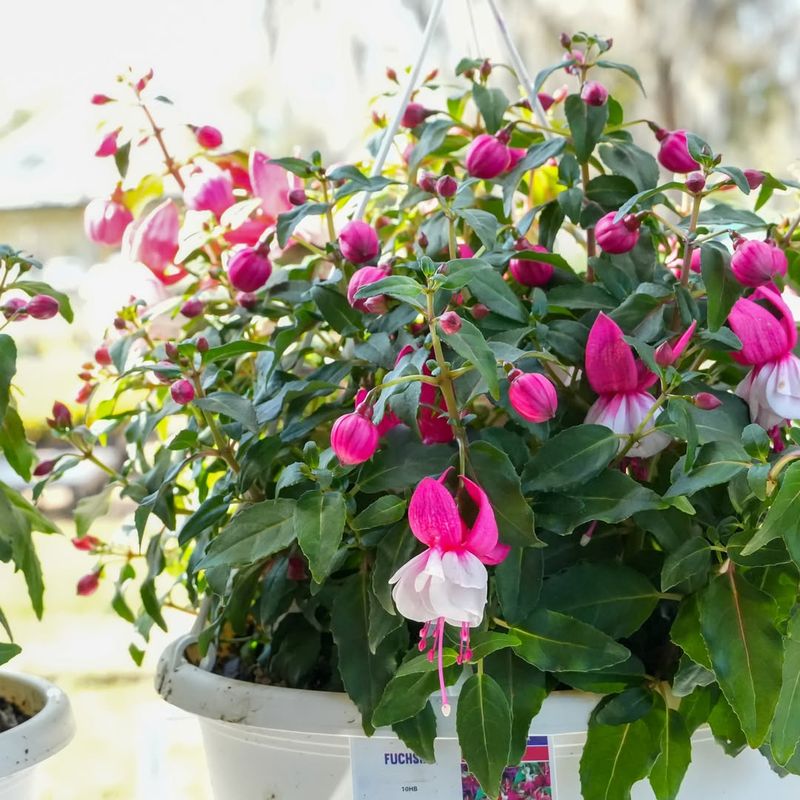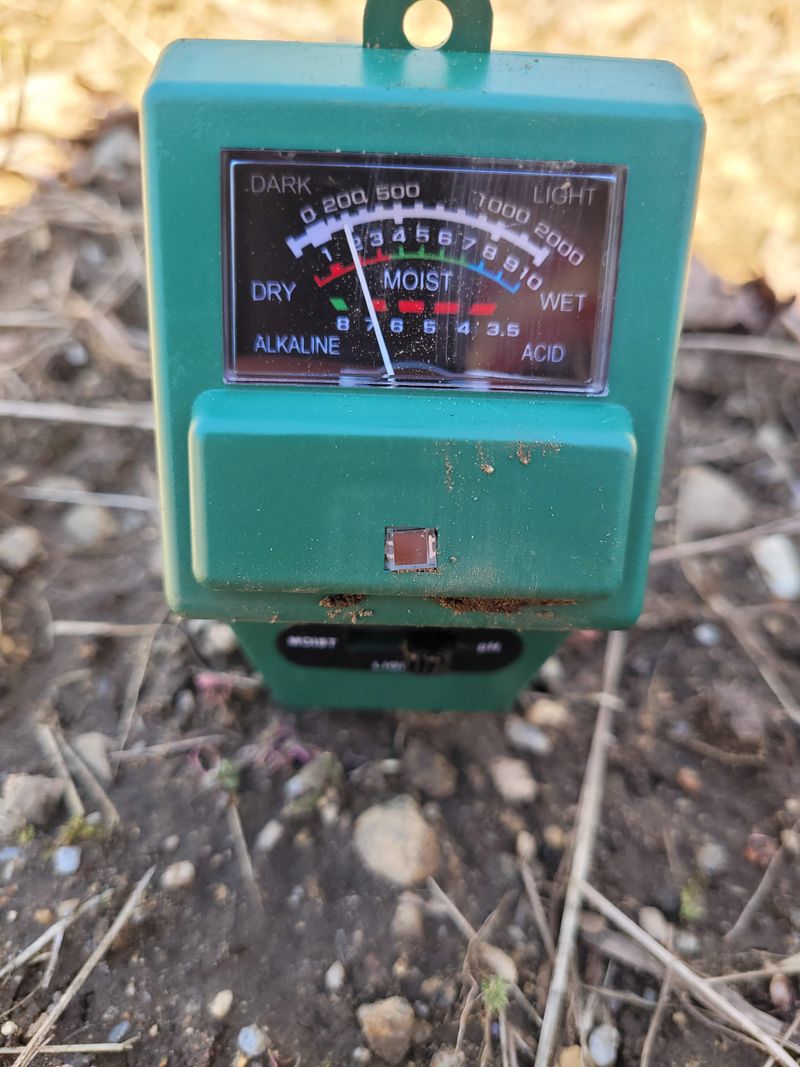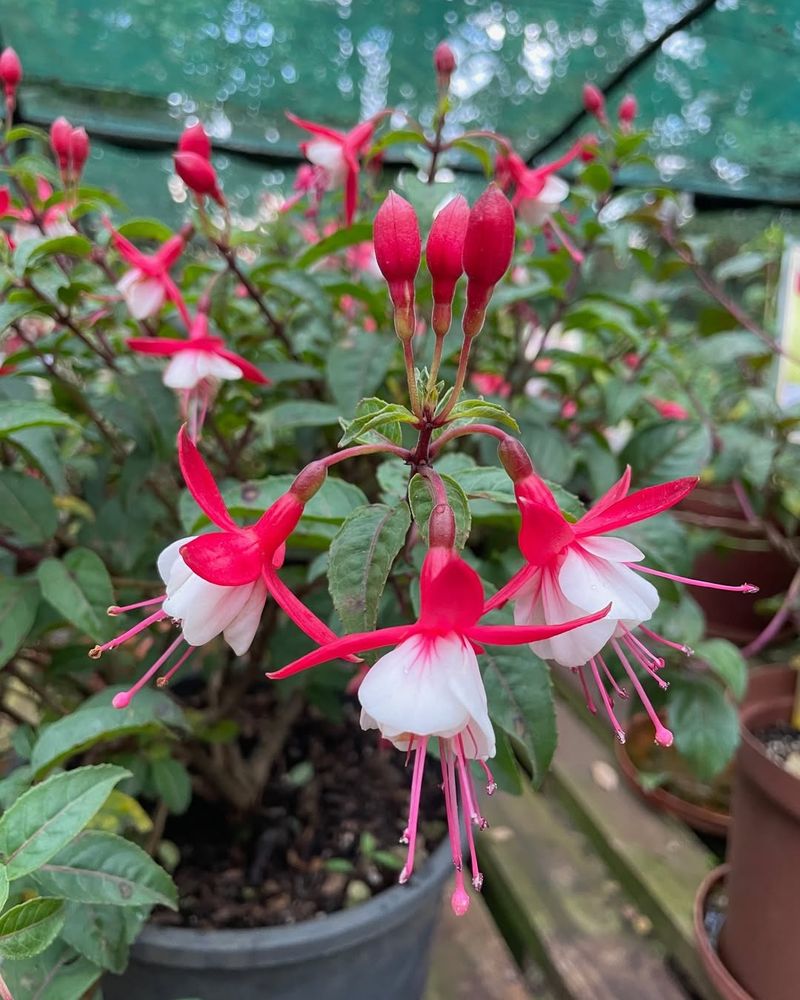Growing fuchsias in pots can be one of the most rewarding ways to brighten up your garden with vibrant, long-lasting blooms. They’re the perfect combination of elegance and easy care, making them a must-have for any plant lover.
In just 30 simple steps, you’ll have your pots bursting with beautiful colors that’ll turn heads all season long. Plus, they’re surprisingly low-maintenance, so you can enjoy the beauty without the hassle.
Let’s get those fuchsias flourishing and make your garden shine!
1. Choose the Right Pot
Choosing the right pot is crucial for successful fuchsia growth. Pots should have good drainage holes to prevent waterlogging, which can lead to root rot.
Consider clay or terracotta pots, as they allow moisture to evaporate, keeping the roots healthy. Pots must be large enough to accommodate the plant’s root system, but not so large that the soil stays too wet.
2. Select a Well-Draining Potting Mix
A well-draining potting mix is essential for fuchsias to thrive. Mix peat moss with perlite or sand to create a blend that retains moisture but allows excess water to drain.
This mix prevents the roots from sitting in water, a common cause of root rot. It’s vital to avoid garden soil, which can compact in pots and restrict airflow.
By ensuring proper drainage, you create an environment where the roots can breathe and absorb nutrients efficiently.
3. Pick the Perfect Spot with Partial Shade
Finding the ideal location for potted fuchsias is key to their success. Fuchsias thrive in partial shade, where they receive bright, indirect sunlight. Too much direct sunlight can scorch the leaves and hinder blooming, while too little light affects growth.
Consider placing pots under a tree or on a shaded patio to balance light exposure. This spot should also have good air circulation to prevent fungal diseases.
4. Choose Healthy Fuchsia Plants
Choosing healthy fuchsia plants sets the foundation for successful growth. Look for plants with vibrant green leaves and plenty of buds, avoiding those with wilted or yellowing foliage.
Inspect for any signs of pests or diseases that could affect growth. A robust plant will establish more quickly in a new pot and environment.
5. Prepare the Pot with Drainage Holes
Proper drainage is crucial for potted fuchsias. Ensure pots have adequate drainage holes to allow excess water to escape, preventing root rot. If a pot lacks sufficient holes, drill additional ones at the bottom before planting.
This preparation step can make a significant difference in plant health. Consider placing mesh or stones at the base of the pot to prevent soil from blocking the holes.
6. Fill the Pot with Soil, Leaving Space at the Top
Properly filling the pot with soil is a crucial step in planting fuchsias. Begin by adding your well-draining potting mix, leaving about an inch of space at the top.
This space allows for easy watering without overflowing. The right amount of soil supports the roots while enabling efficient water and nutrient absorption.
7. Place the Fuchsia Plant in the Pot
Planting your fuchsia correctly ensures a healthy start. Gently remove the plant from its nursery pot, being careful not to damage the roots. Place it centrally in the new pot, spreading the roots slightly if needed.
Positioning the plant correctly helps the roots establish quickly. Ensure the top of the root ball is slightly below the pot’s edge to allow for mulching.
8. Backfill with Potting Mix
After placing the fuchsia, backfill the pot with your prepared soil mix. Gently pat down the soil to remove air pockets, ensuring the plant stands upright. This support is crucial for the plant to establish itself in the new environment.
Avoid compacting the soil too much, as this can hinder root growth. By providing a stable foundation, the roots can spread and anchor the plant.
9. Water Gently After Planting
Watering is a crucial step after planting your fuchsias. Gently water the plant, allowing the soil to settle around the roots.
This initial watering helps eliminate air pockets and provides moisture to kickstart growth. Be careful to avoid overwatering, which can lead to root rot. .
10. Add a Layer of Mulch to Retain Moisture
Mulching helps retain moisture and regulate soil temperature for your potted fuchsias. Apply a thin layer of organic mulch, such as bark or wood chips, around the base of the plant.
This mulch keeps the roots cool and moist, reducing the watering needs. Additionally, it suppresses weed growth, ensuring the fuchsias receive all available nutrients.
11. Place the Pot in a Cool, Shaded Location
Positioning your fuchsia correctly enhances its growth. Place the pot in a cool, shaded area to protect it from harsh sunlight, which can scorch the leaves.
Fuchsias appreciate cooler temperatures and indirect light, which encourage lush growth and abundant blooms. Ensure there is adequate air circulation around the pot to prevent fungal diseases.
12. Water Regularly, Keeping Soil Moist But Not Wet
Consistent watering is vital for fuchsias in pots. Aim to keep the soil moist, but not waterlogged, to prevent root rot. Check the soil’s top inch regularly; if it feels dry, it’s time to water.
Using a watering can with a fine rose ensures gentle, even distribution. Be mindful of temperature and humidity fluctuations that affect watering needs.
13. Ensure Good Air Circulation Around the Plant
Air circulation plays a key role in fuchsia health. Ensure your plant has space around it for air to flow freely, reducing the risk of fungal diseases.
Avoid overcrowding with other plants to allow adequate breathing room. A gentle breeze helps keep the foliage dry, preventing mold and mildew.
14. Fertilize Monthly with a Balanced Liquid Fertilizer
Regular fertilization supports the lush growth of fuchsias. Use a balanced liquid fertilizer once a month to provide essential nutrients.
This practice bolsters blooming and foliage development, ensuring vibrant, healthy plants. Follow the product instructions for dilution and application to avoid over-fertilization, which can harm the plant.
15. Remove Dead or Damaged Foliage
Keeping your fuchsias tidy involves regular trimming of dead or damaged leaves. This maintenance prevents disease spread and redirects energy to healthy growth.
Use clean, sharp pruning shears to make precise cuts, avoiding tearing the plant tissue. Regularly inspect your plant to catch any signs of damage early.
16. Pinch Back Growing Tips to Encourage Bushiness
Promote bushy growth in fuchsias by pinching back the growing tips. This technique encourages branching and results in a fuller plant with more blooms.
Use your fingers to gently pinch the top few inches of the plant, focusing on new shoots. This simple practice enhances the plant’s overall appearance and bloom potential.
17. Prune After Blooming to Maintain Shape
Pruning fuchsias after they bloom helps maintain their shape and encourages new growth. Use clean, sharp scissors or pruning shears to remove spent flowers and any unruly branches.
This encourages a tidy appearance and prevents the plant from becoming leggy. Focus on snipping just above a pair of leaves to promote branching.
18. Deadhead Flowers to Promote Continuous Blooms
Deadheading, or removing spent flowers, is crucial for encouraging continuous blooming in fuchsias. This simple practice prevents the plant from setting seed, redirecting energy to new flowers instead.
Use your fingers or sharp scissors to gently remove wilted blooms. Regular deadheading keeps your plant looking fresh and vibrant, with a constant display of flowers.
19. Check for Pests Regularly
Vigilance against pests is key to maintaining healthy fuchsias. Regularly inspect your plant for signs of aphids, spider mites, and whiteflies, common fuchsia pests.
Look under leaves and around stems for small insects or damage. Early detection allows for prompt action, preventing infestations that can harm your plant. Maintaining a clean growing environment reduces pest attraction.
20. Treat Pests with Organic Solutions, If Necessary
If pests appear, opt for organic treatments to handle them safely. Use insecticidal soaps or neem oil, which are effective against common fuchsia pests without harming beneficial insects or the environment.
Always follow the product instructions for application rates and methods. Regular treatments may be necessary for persistent issues, but organic solutions minimize harm to the plant and surrounding ecosystem.
21. Provide Support for Tall Fuchsias with Stakes
Tall fuchsias often require support to prevent them from toppling over, especially in windy conditions. Use stakes or bamboo canes to provide stability.
Insert the stake into the pot, taking care not to damage the roots, and gently tie the plant with soft ties. This support helps maintain the plant’s upright growth, reducing the risk of breakage.
22. Move Pots Indoors During Frosty Weather
Fuchsia plants are sensitive to frost and require protection during cold weather. Move potted fuchsias indoors or to a sheltered spot when frost is expected.
Ensure they still receive indirect light and adequate air circulation indoors. This temporary relocation keeps your plants safe from freezing temperatures, which can damage or kill them.
23. Avoid Overwatering to Prevent Root Rot
Overwatering is a common issue for potted fuchsias, leading to root rot. To prevent this, always check the top inch of soil before watering. If it feels moist, wait before adding more water.
Ensure that your pot has proper drainage to allow excess water to escape. By being mindful of your watering habits, you protect your plant’s roots, helping them remain healthy and strong.
24. Repot Every 1-2 Years to Refresh Soil
Repotting fuchsias every 1-2 years is essential to refresh the soil and provide more space for root growth. This process replenishes nutrients and prevents compaction, promoting healthier plants.
When repotting, gently loosen the roots and choose a slightly larger pot if necessary. Fresh soil supports vibrant blooms and robust growth, enhancing your plant’s overall health.
25. Protect Fuchsias from Strong Winds
Strong winds can damage delicate fuchsia branches and flowers. Place pots in sheltered locations, such as near walls or fences, to protect them.
If necessary, use garden stakes for additional support against wind. This proactive approach prevents breakage and ensures the plant remains upright.
26. Keep the Soil Slightly Acidic
Fuchsias prefer slightly acidic soil for optimal growth. Aim for a pH level between 5.5 and 6.5, which supports nutrient uptake and healthy development.
Test your soil regularly and amend it with materials like peat moss or sulfur if needed to adjust the pH. This attention to soil chemistry ensures your fuchsias receive the nutrients they need to thrive.
27. Adjust Watering Frequency During Hot Weather
Hot weather demands extra attention to your fuchsia’s watering needs. Monitor the soil moisture more frequently and increase watering if the heat causes rapid drying.
Early morning or late afternoon watering minimizes evaporation. Adapting your routine ensures the plant remains hydrated and stress-free during heatwaves.
28. Use a Tray Under Pots to Catch Excess Water
Using a tray under your fuchsia pots helps manage excess water, preventing overwatering. This simple addition catches drainage, protecting surfaces and allowing you to monitor water needs.
Ensure the tray is emptied regularly to avoid stagnant water, which can attract pests. By providing this added layer of care, you ensure your fuchsias receive optimal moisture without risking root rot.
29. Mulch in Winter to Protect Roots
Winter mulching protects potted fuchsias’ roots from cold temperatures. Apply a thick layer of organic mulch, like straw or bark, around the base of the plant.
This insulation keeps the roots warm, preventing frost damage and ensuring survival through winter. Mulching also retains moisture, reducing watering needs during cooler months.
30. Enjoy the Blooms and Show Off Your Stunning Fuchsias
Once you’ve mastered fuchsia care, it’s time to relish their beauty. Display your potted fuchsias prominently on a patio or garden area where they can be admired.
These stunning blooms make a striking statement, showcasing your gardening success. Share them with friends and family, who will surely appreciate the lively colors and delicate flowers.

